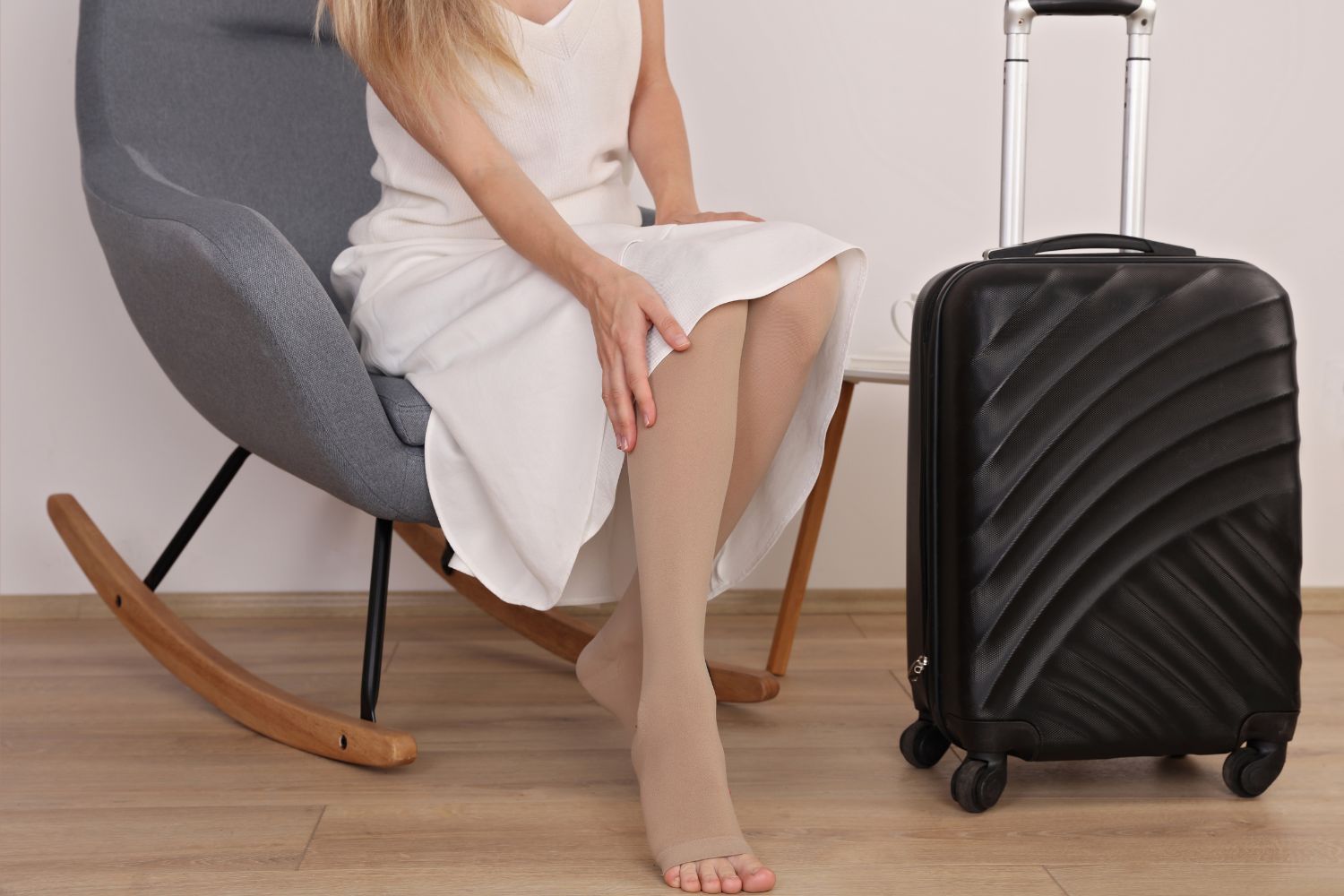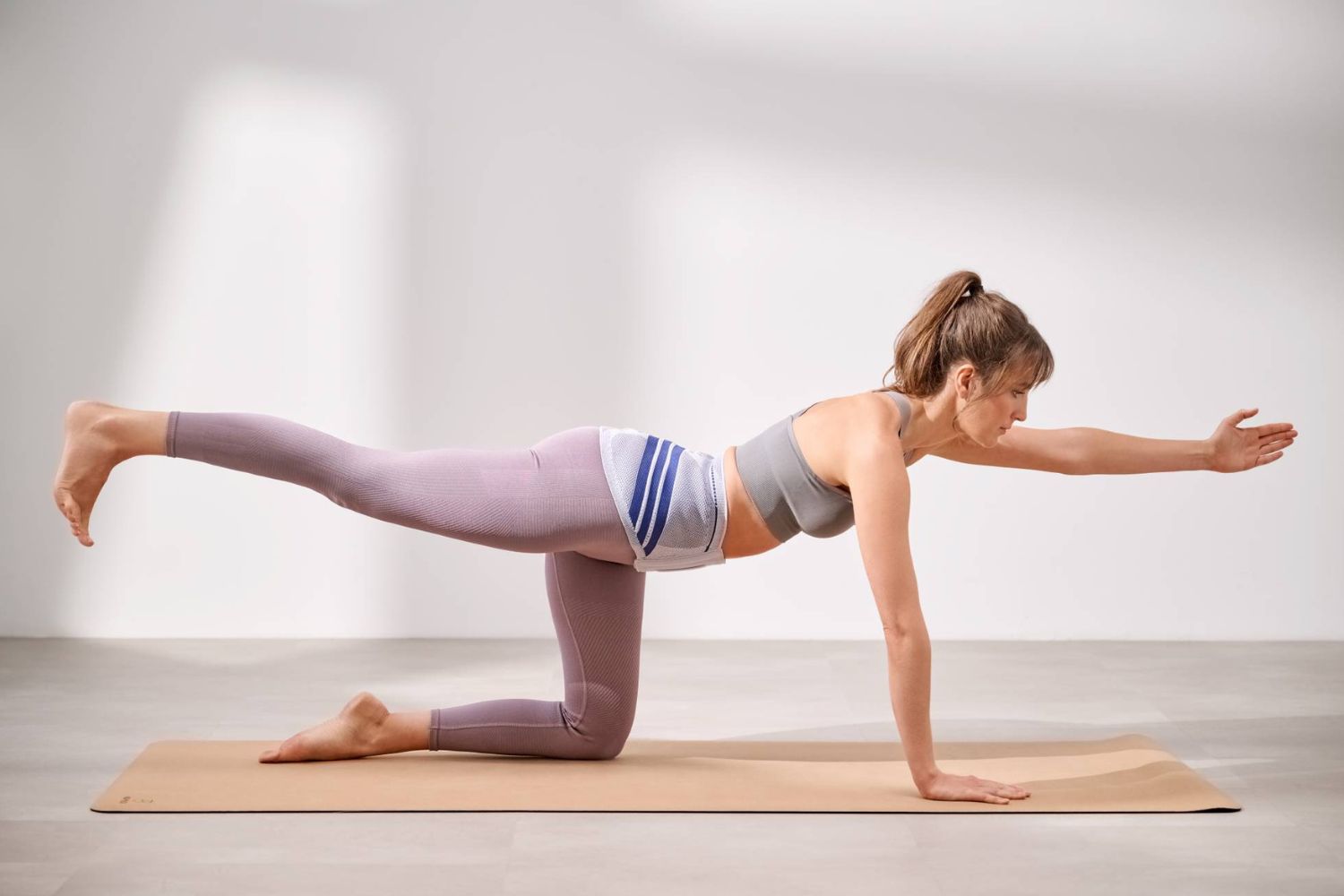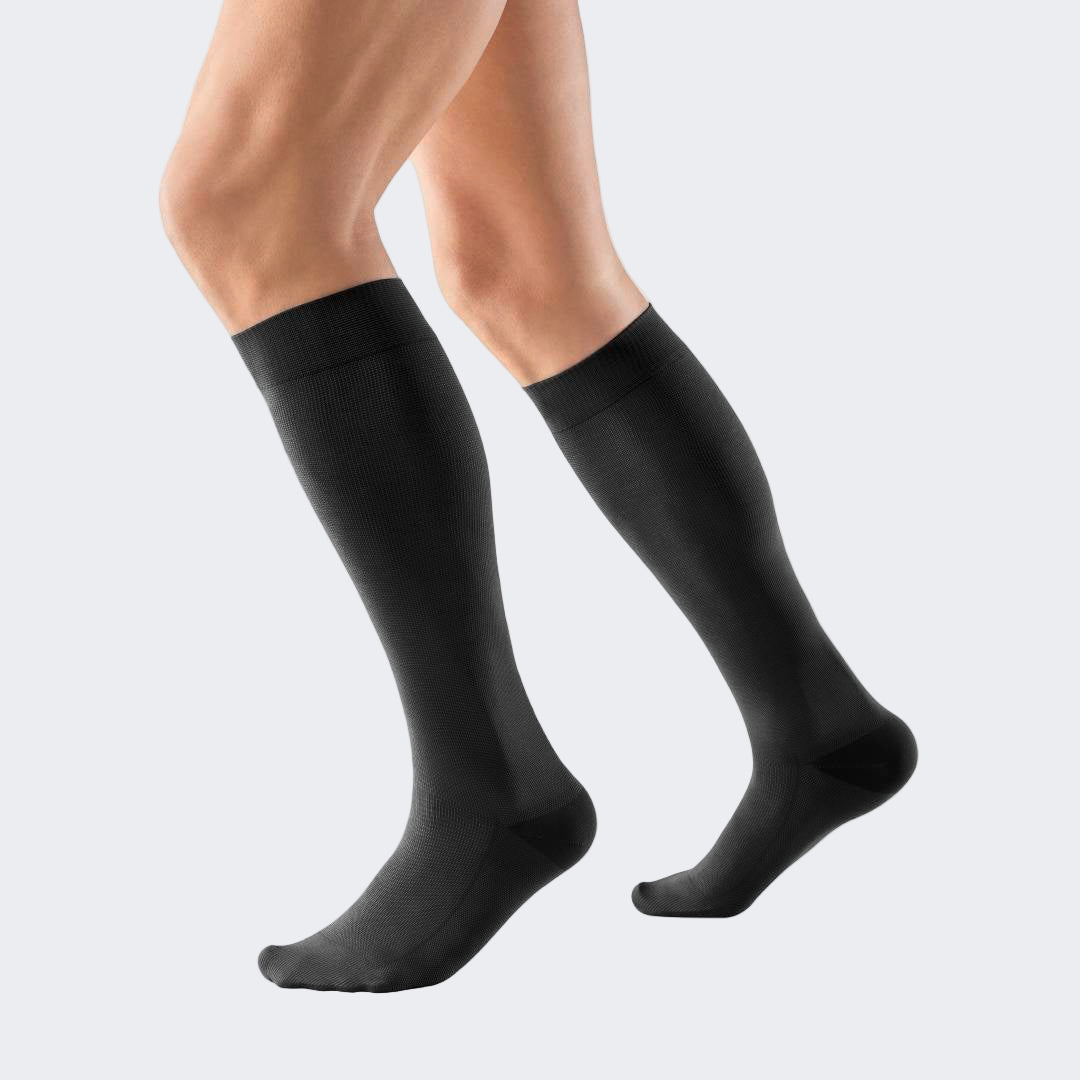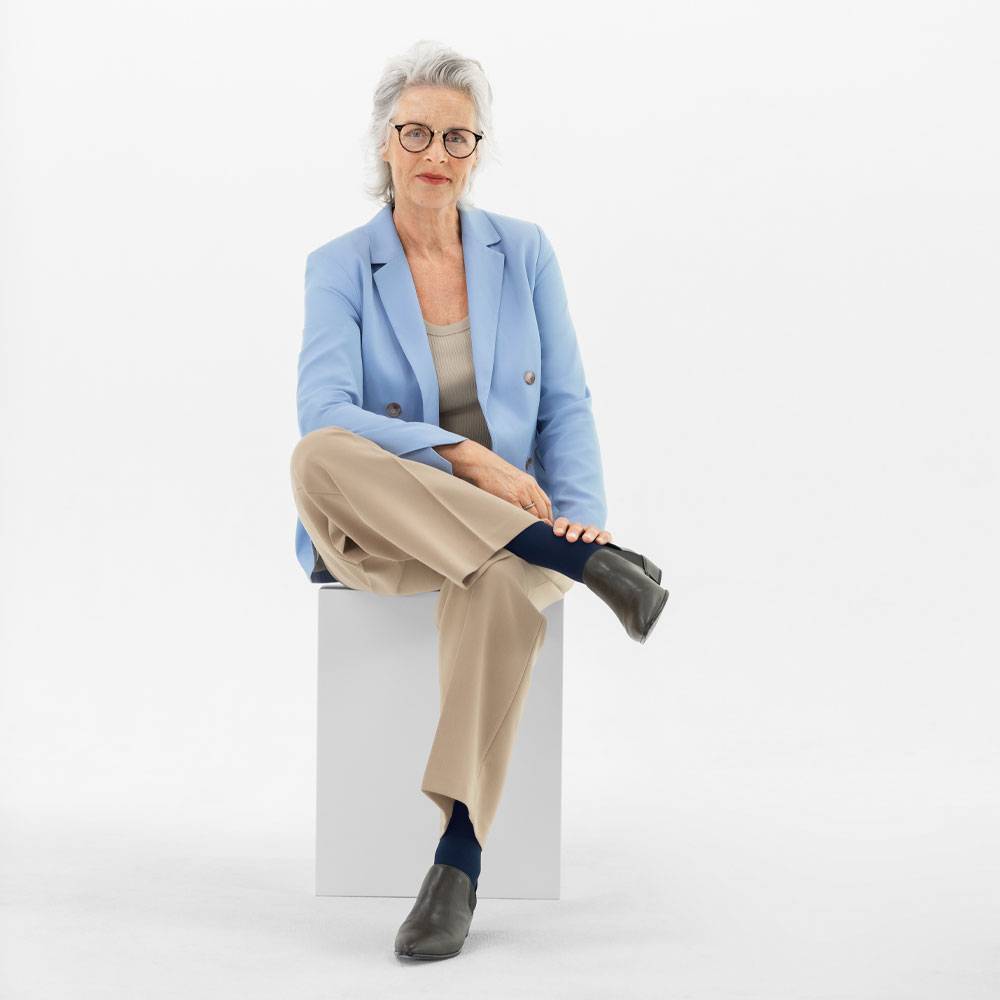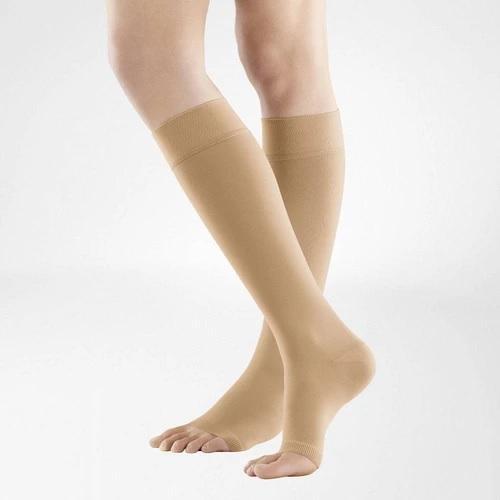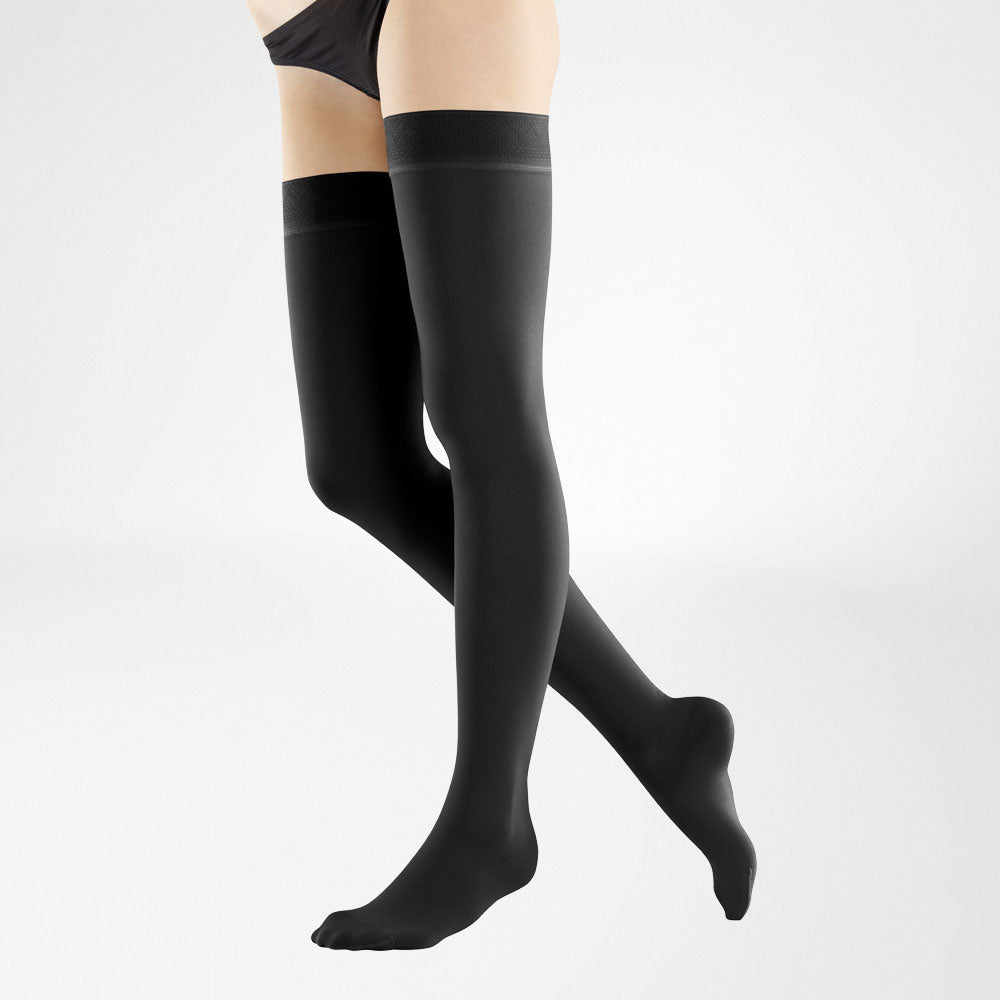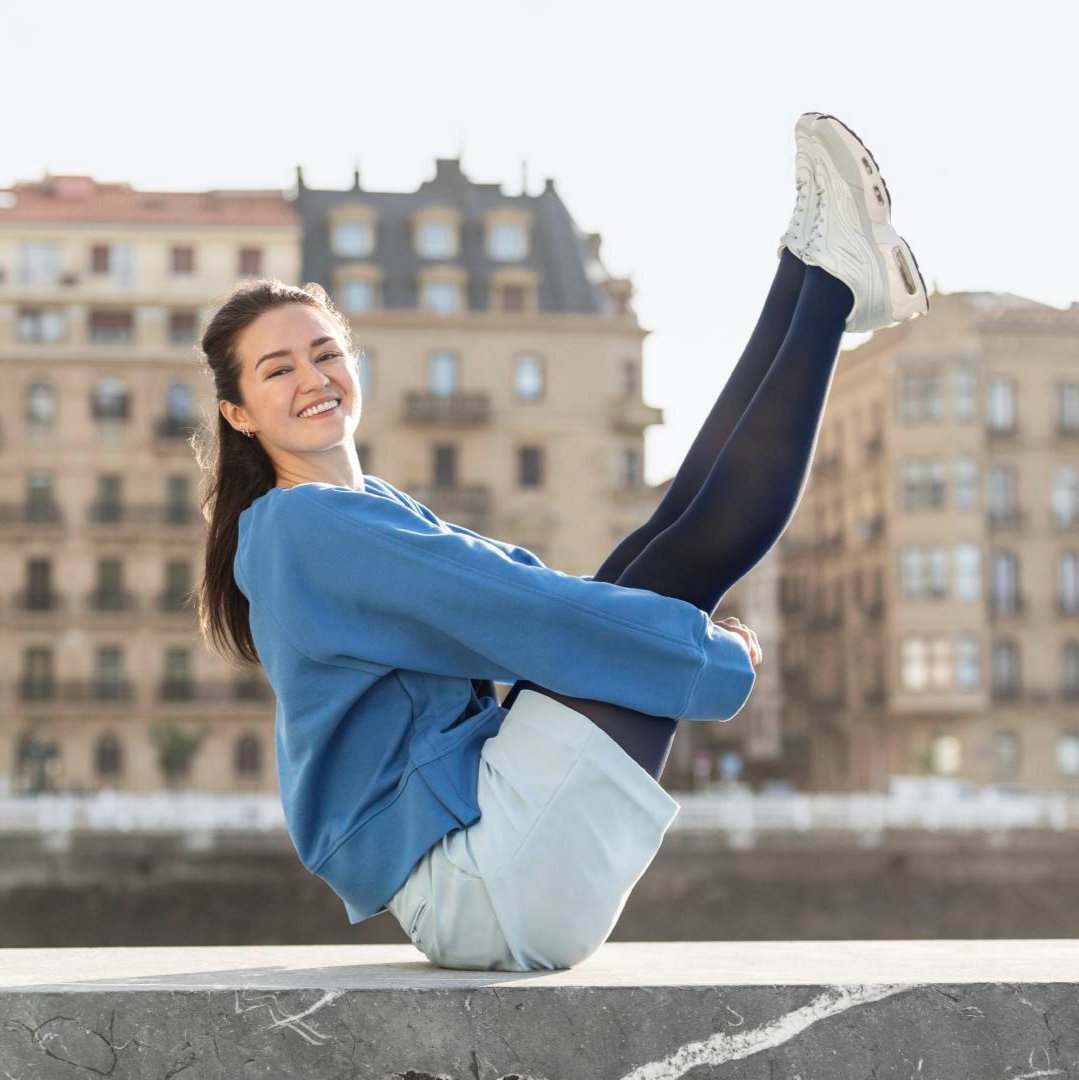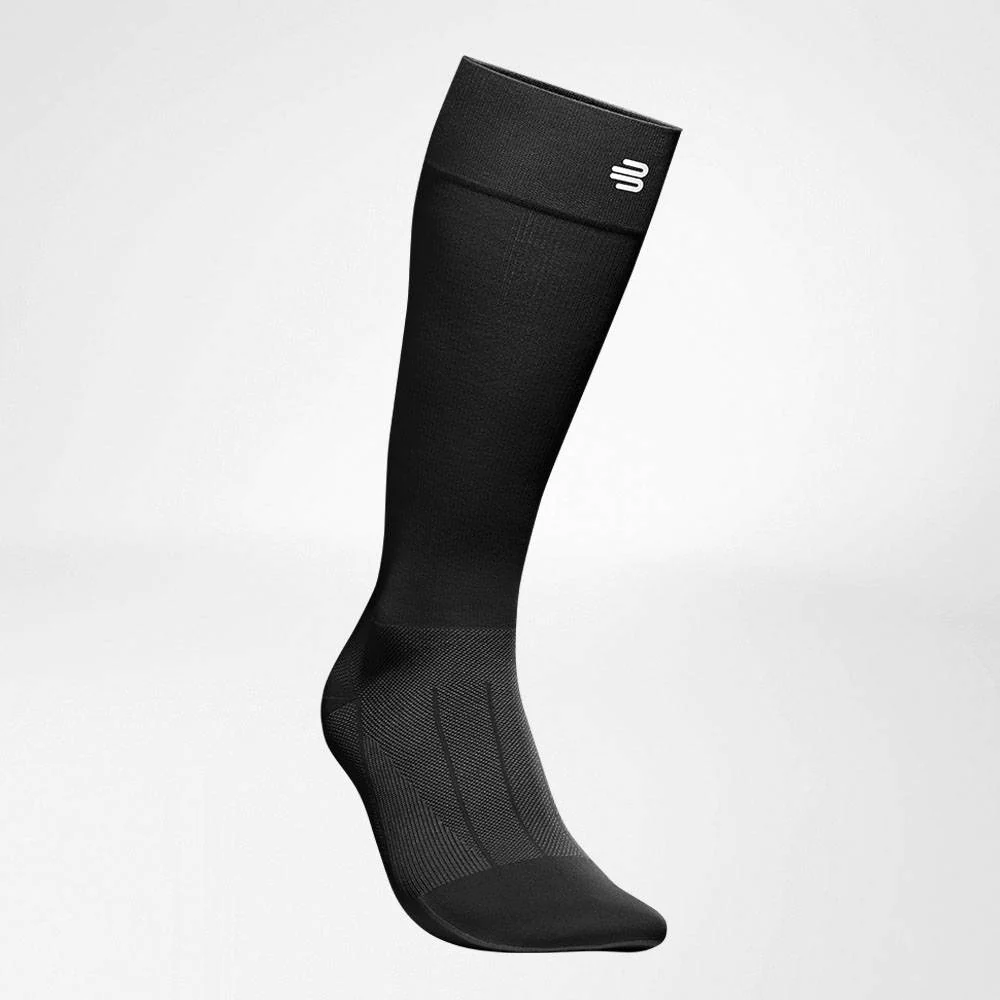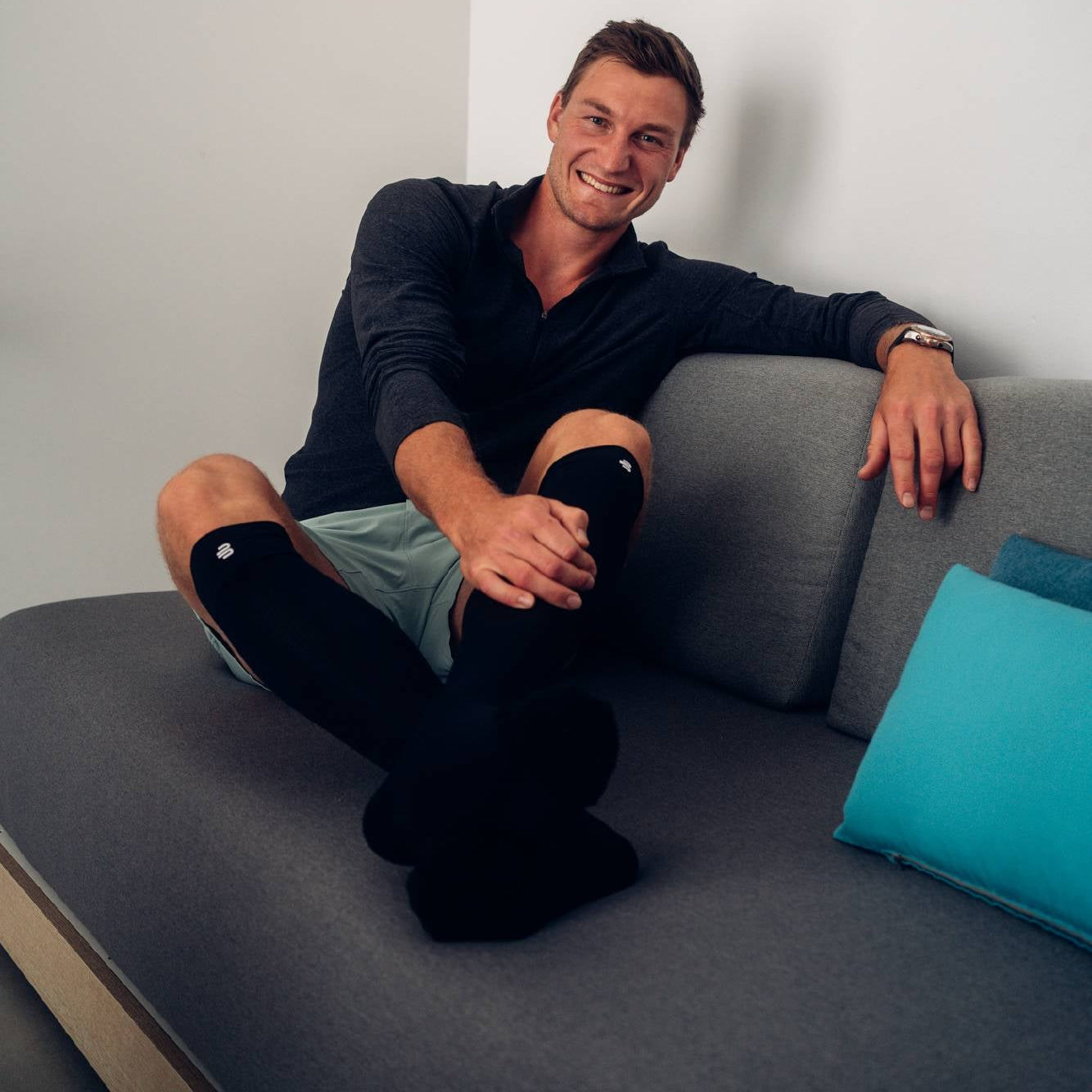With the world’s top tourist destinations finally open again, we’re all itching to make travel plans to make up for lost time. But while a holiday may be good for your health, a 10-hour flight or a weeks-long road trip can take a toll on your leg veins. That’s why compression stockings are a key holiday ingredient. From boosting circulation to helping you avoid blood clots, here’s why you should wear compression stockings for travel.
How long-haul travel affects the veins
When you’re stuck in a plane or car for hours on end, you aren’t moving around as much. While healthy arteries won't have trouble moving blood from the heart and into tissues, your veins can struggle to keep up. That’s because while powerful heartbeats support your arteries, your veins rely on their surrounding muscles to move it up and on tiny vein valves to stop it from flowing backwards. The effect is especially pronounced in the leg veins, which have to fight against the pull of gravity to do their job.
Over time, circulation around your lower extremities (mainly your feet, ankles, and calves) slows down further. You might experience swelling, tingling, and discomfort.
The chilly AC settings and dry air on flights can make matters worse. Veins constrict in the cold, and blood thickens when you’re dehydrated, making it much harder for it to circulate around your body.
The benefits of wearing compression stockings for travel
Recovery Compression Socks
Compression socks keep your circulation steady even when you’re still, helping you avoid the swelling and discomfort that often comes with long periods of inactivity. They work by gently squeezing your legs, which;
- Helps your tissues absorb excess fluid
- Squeezes surface veins to prevent congestion and keep blood moving into the deep veins
- Activates the muscles surrounding your deep veins to help them pump blood to the heart.
And by improving your circulation, compression socks can also reduce your risk of a blood clot. They’ll be especially important if you’re predisposed to clotting disorders like Deep Vein Thrombosis or venous disorders like chronic venous insufficiency.
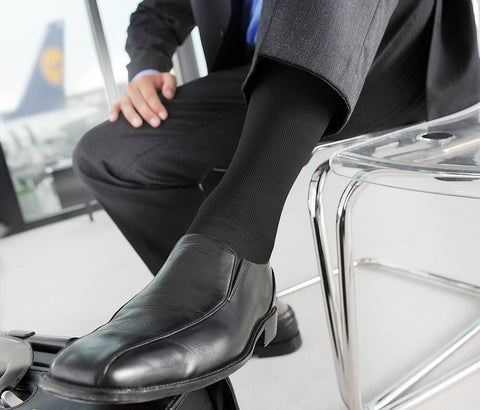
VenoTrain Business Knee-High Socks
What kind of compression do you need?
Compression garments come in many lengths and millimetres of mercury (mmHg - essentially, how ‘compressive’ they are).
Compression class
As a general guide, class 1 (18-21 mmHg) stockings are best for healthy veins that just need a bit of extra assistance on a flight, while class 2-4 (23-49+ mmHg) are more suited to those struggling with venous and lymphatic disorders. While you can get class 1 stockings from a retailer, medical-grade stockings (especially class 3 and 4) may require a prescription.
Check out our VenoTrain Cocoon for that increased level of compression:
VenoTrain Cocoon Compression Socks
Sizing
You should also always make sure that your stockings are the right fit. If they’re too loose, they won’t provide adequate compression. If they’re too tight, they may hamper your circulation instead of helping it.
Length
Knee-high, thigh-high, and waist-high garments will all provide your leg veins with the support they need on a long trip. That’s because the calf is primarily responsible for pumping blood upward. So, see which length works best for you. We do want to note, though, that the edges of socks can curl and bunch when your knee is bent and may cause a bit of irritation if you’re not careful.
VenoTrain Micro Compression Socks, Stockings, and Pantyhose
The downsides of travelling in compression socks
On that note, let's get into a few downsides of compression socks. Typically, properly-fitted, high-quality socks are much less likely to cause concerns. But you may experience irritation around the band if it’s not straightened (or if there is no comfort zone), and your skin may get agitated and itchy if it's dry or particularly sensitive or the material quality isn’t up to par.
The only instance where the harms outweigh the benefits of compression socks is if you have a compromised skin layer. If your skin is prone to breakage or bruising, speak to your doctor before wearing compression socks - especially for long periods.
Other travel tips for healthier veins
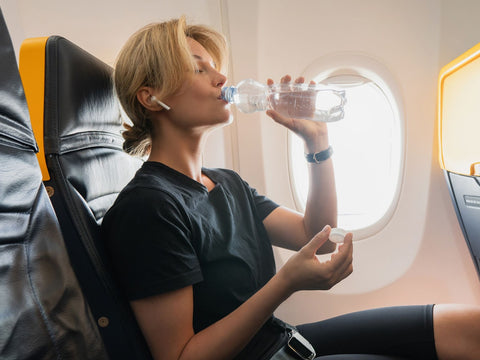
Compression shouldn’t be the only way you help your veins on a long flight or car ride.
- Drink plenty of water. Staying hydrated will thin the blood, making it easier for it to travel around your body.
- Move as much as possible. Rotate your ankles and rock your feet from your heel to toe while sitting. Walk around the cabin as much as the flight attendants will allow. Do some squats, lunges, and calf raises while waiting for the restroom on a flight and while stopping on a car trip.
- Wear loose-fitting clothing. Tight waistbands make it harder for blood to move from your legs to your heart.
To sum up
Doe to the many hours of sitting, travel can take a toll on your veins. Even if you have healthy veins, long periods of inactivity can cause swelling and discomfort in the legs. Fortunately, compression socks make great travel companions due to their ability to boost circulation. And along with staying hydrated and moving as much as you can, wearing them will result in a happier trip for your veins. Just remember: quality and sizing are key.














